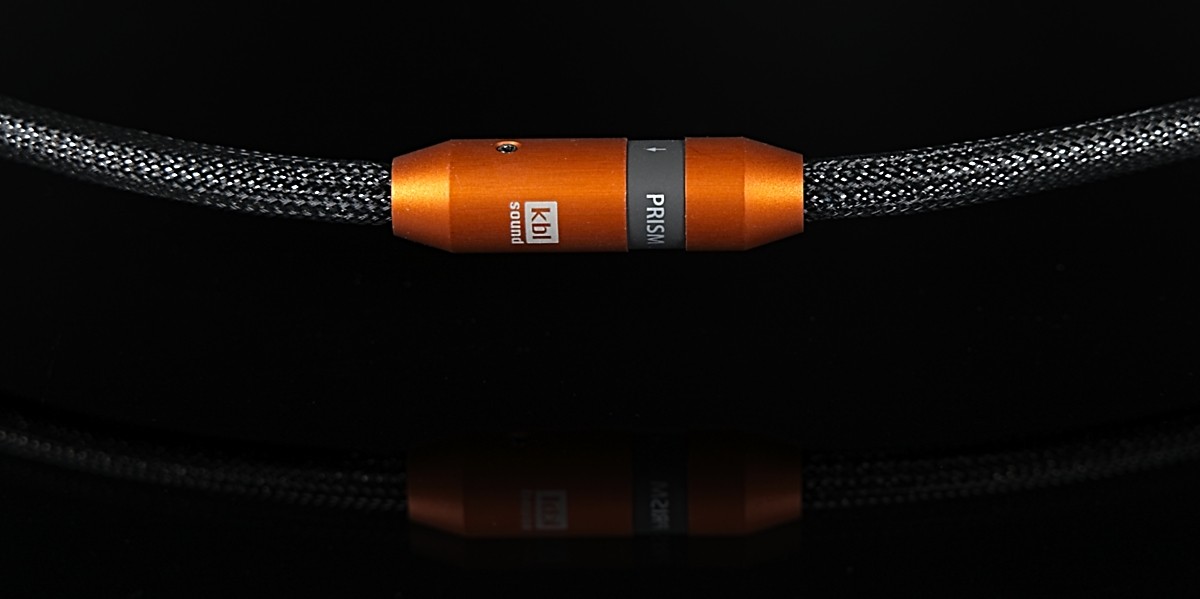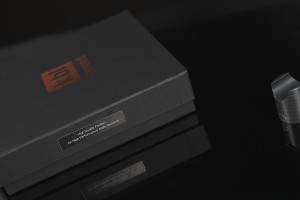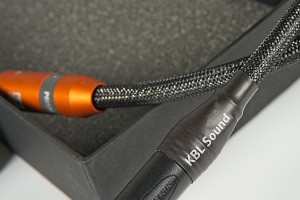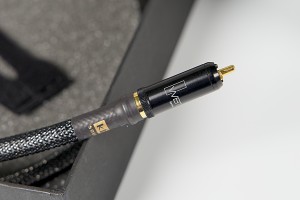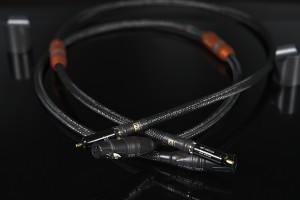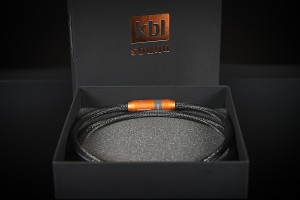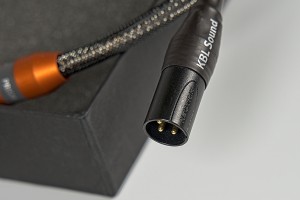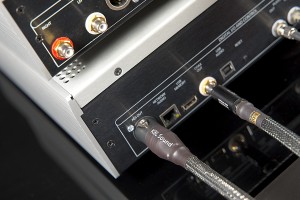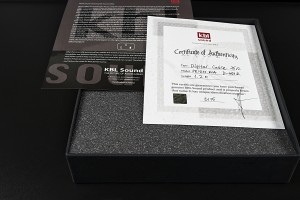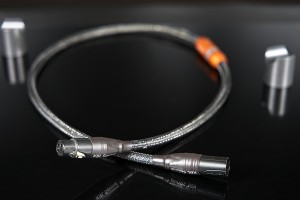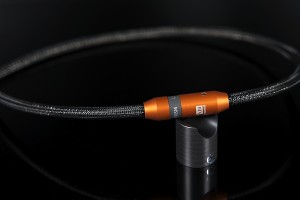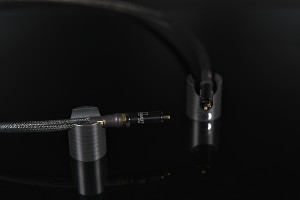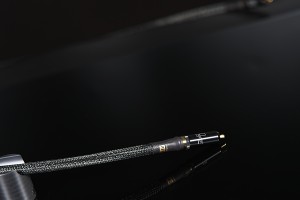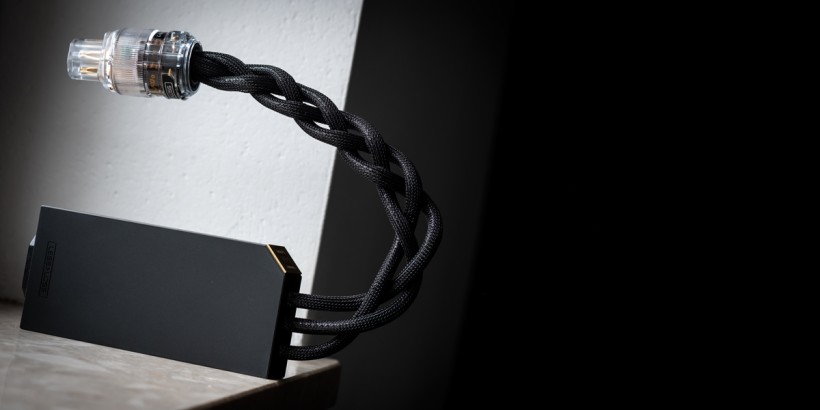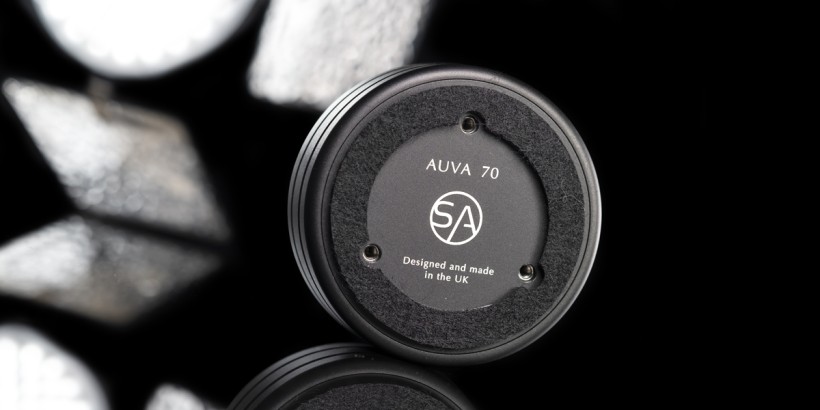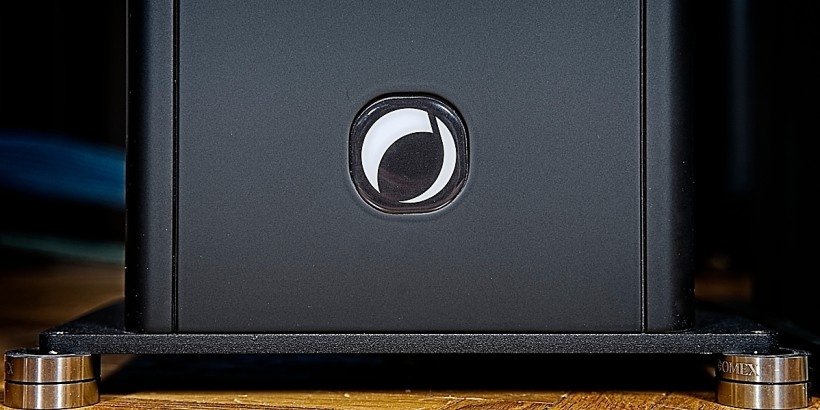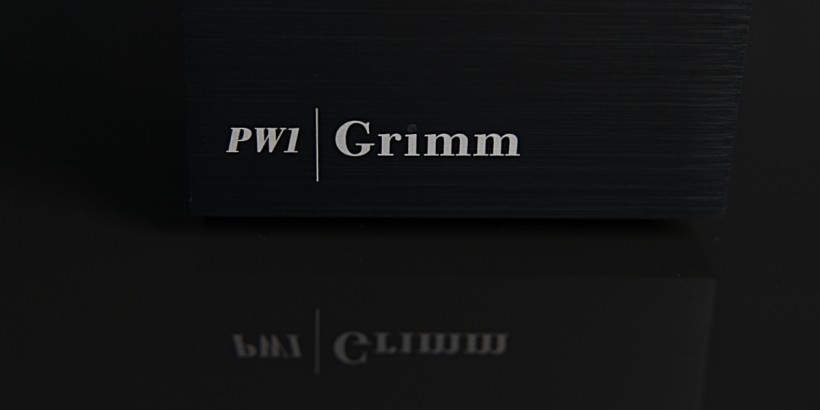Until recently my dealings with KBL Sound’s lineup were limited to analog signal and power cables. Since all the experiences turned out to be very positive I decided to try out some of the digital cables as well, and thus I can share my thoughts on the KBL SOUND PRISM D-451R & D-551X cables.
Introduction
Most of the cable companies offer a wide array of products that cover most, if not all, potential audiophile needs. The latter include analog and digital signal cables and power and speaker ones. Recent years saw a huge increase in interest in audiophile USB and Ethernet cables, and DC power cables, as the audio files became an important part of many audiophiles’ systems. Where there is demand supply usually follows. At first, there were only a few brands offering these types of cables but today you can find dozens, if not hundreds of them. Which on the one hand gives you a chance to choose among a large number of products available, on the other choosing the right one for you is not that simple. The reviews are meant to suggest which brands and products are worth your interest.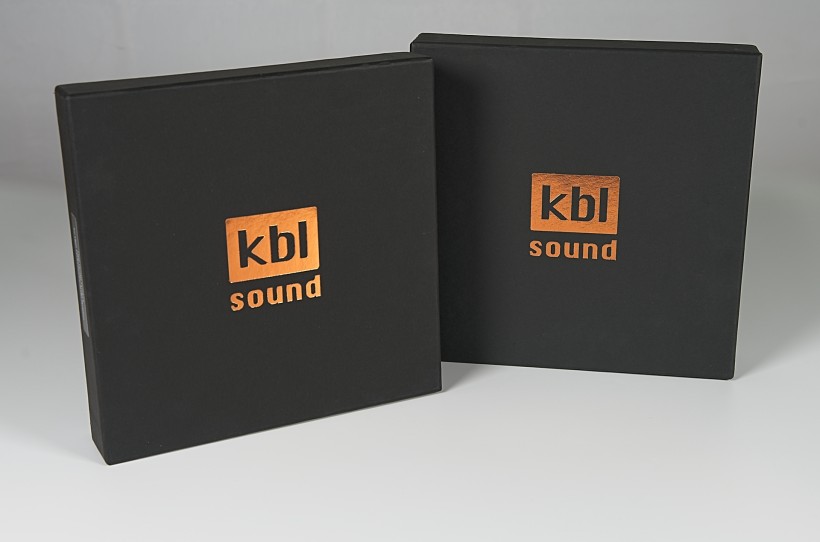
While KBL Sound, which our readers know well from reviews of analog interconnects (KBL Sound Himalaya HERE, KBL Sound Himalaya II XLR HERE, KBL Sound Red EYE HERE and KBL Sound Red EYE Ultimate Phono HERE – both now obsolete), and power cables and distributors (KBL Sound Synchro Master Power, and RPD-6 Mk3 HERE), seems or seemed until recently to focus their efforts on analog interconnects, speaker and power cables, they do offer digital interconnect as well. Currently, there are already two lines of digital cables, including the latest addition to line up, USB cables. There is PRISM and there is the top-line HYPERPRISM, both including all basic types of links required by audiophiles, Coaxial and BNC, AES/EBU, and USB. This time, however, I shall take a closer look at both Coaxial RCA and AES/EBU digital Prism cables but, spoiler alert (!), USB is waiting its turn…
Design and features
As the designer, Mr. Robert Szczerbowski, told me, both digital interconnects are identical except for plugs and impedance as the requirements/standards for them in this regard differ. For your information, there is also a BNC version (Prism D-355B) – the same story, meaning the same cable with a different termination. The Coaxial SPDIF or PRISM D-451R is a 75 Ohm cable while AES/EBU or PRISM D-551X is a 110 Ohm one. So the differences, if any, one can hear using both of them should come from the properties of each of the two interfaces (transmitter and receiver) rather than from any design differences. Sure, they use different plugs, yet the sonic signature should come mostly from the cable itself.
The information on the design is scarce, as is usually the case with this manufacturer, but let’s review what we know. The standard length of each type is the same – 1,2m (longer cables are available upon order). As the designer explains it not only allows users for greater convenience as it is easier to connect to devices with a bit longer cable, but it does offer also sonic benefits. The basic material, conductors, are made of pure mono-crystal copper, and the wires are hand-polished. The designer decided to use several dielectrics including air, non-colored PTFE, kapton, polyurethane, and polyolefin.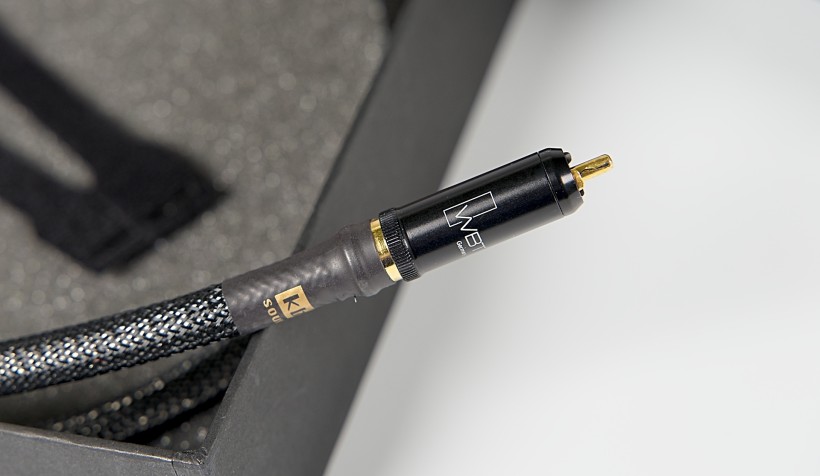
Another important feature of the design is wide-band shielding using copper, and tinned copper. Also, the external sleeving is a part of cable shielding that covers the high-frequency noise. It is a braided sleeve made of anti-static carbon-infused polymer. KBL Sound is known for using high-quality components in their products hence RCA WBT-0114 Cu nextgen™ WBT-PlasmaProtect™, True 75 Ω connectors for PRISM D-451R, and Neutrik NC3FXCC/NC3MXCC 110 Ω connectors come as no surprise. Both cables come in simple but nice-looking boxes with Certificates of Authenticity.
Sound
To be honest, this is a bit unusual test for me. Simply because first of all, I don’t use digital interconnects regularly (unless you count USB and Ethernet cables among them). It doesn’t mean I don’t have any experience with coaxial, BNC, and AES/EBU cables as I sometimes need these types of links for some reviews, and manufacturers or distributors often provide me with proper, high-quality models. Secondly, for this test, I had to use other reviewed components, namely the excellent Playback Design (PBD) MPD-6 D/A Converter and the same brand’s digital frontend MPD-X that I connected using KBL Sound digital interconnects. I am not sure at the moment which review will be published first, but just in case it is this one let me just say, that both Playback Design components are incredibly good which makes them a great tool for this assessment!
I used both, coaxial and AES/EBU KBL Sound Prism between the two PBD components, and the coaxial also between MPD-X and my own LampizatOr Pacific 2. Later, to compare PRISM D-451R with a counterpart by Siltech, I used Ayon Audio CD-35 HF CD/SACD Player as a transport, and my LampizatOr Pacific 2 as a DAC. Let me add, that at the time of this review, I still had three KBL Sound top power cables Extrema in the system that I’d recently reviewed for HighFidelity.pl. They easily outperformed my own LessLoss power chords, hence, since I didn’t have to return them just yet, I kept using them and enjoyed the extra quality they added to the setup’s performance. OK, let’s get to it.
KBL Sound PRISM D-551X (AES/EBU)
I start my listening sessions with KBL Sound PRISM D-551X (AES/EBU) connecting Playback Design MPD-X with MPD-6 (see the review HERE) and playing several tracks straight from my custom server used interchangeably with JCAT’s XACT S1 (see the review HERE), both connected to the former via David Laboga Custom Audio Expression Emerald Mk 2 USB cable. The very first impression is of a very ‘non-digital’ sound. OK, let’s be honest, digital sound today differs significantly from that of, say, 10-15 years ago. Back then, digital sound was, to my ears, harsh, bright, irritating, and almost impossible to listen to for an extended time. It has changed at some point and today top digital sources sound (almost) as good as top analog rigs (yes, I know some of you won’t agree, preferring digital sources, and that’s your prerogative, yet claiming otherwise is mine). So non-digital doesn’t mean as much today as it once did, yet for me it signifies that nothing irritates me in the sound which is the very base for me of digging deeper into performance to find out more about KBL Sound PRISM D-551X.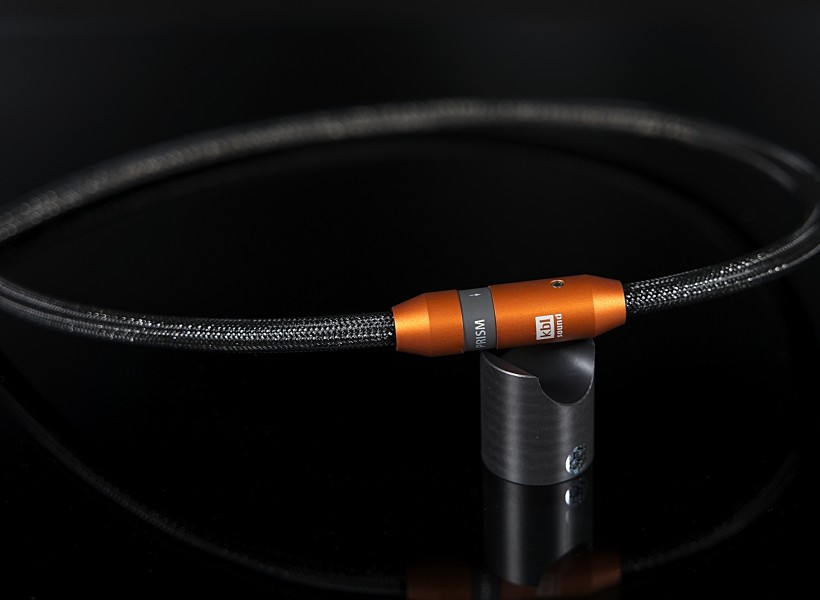
As I am listening to Isao Suzuki’s „Blow Up 2” album I appreciate how natural, how rich the double bass is, and how nicely all the intricate details of the maestro’s playing are presented. The instrument has a large and heavy body that supports each string pluck adding, well… body to it. I can hear all the tiniest details of fingers moving along the strings or even the way strings are plucked and vibrate on the instrument’s neck. The sound of my favorite instrument is therefore very rich, deep, complete, and tuneful with fast, yet naturally soft attack and proper sustain and decay. It also extends really low when needed, which Mr. Suzuki likes to showcase every now and then in this recording. In fact, it goes as deep as I’ve ever heard it from my speakers.
The piano that joins the bass sounds also a little bit soft, yet rich, and vibrant. The „softness” comes from the large, heavy body of the instrument as the strings are crisp enough. The combined sound of both is very natural and coherent. Both instruments play with authority such huge bodies should give them, but that not always (not with every component, not with every cable) is properly reproduced. The next instrument that attracts my attention still in the same recording is drums. I particularly like the crisp, vibrant, very well-differentiated cymbals. The drums are tight, fast, and powerful, and the rhythm as delivered with PRISM D-551X is not just good, it’s addictive and thus I can’t help but tap my feet along.
The very good PRAT (pace, rhythm, and timing) becomes even more prominent when I play the title track from Prince’s „Welcome 2 America”. The powerful electric bass plays with authority extending very low while keeping an impressive tightness and high energy. Yet, it’s the Prince’s vocals that grab my attention and keep me engaged from start to finish. While both range extremes sound (usually) more impressive, it is the midrange that is always the most important part of the range. And so it is also here in this track. It’s smooth and rich, yet resolving and transparent. Every detail of Prince’s voice timbre and texture is presented in a quite precise way, yet the singing seems effortless and relaxed. The vocals are open, full of air, tuneful, yet not colored, and last but not least, highly expressive.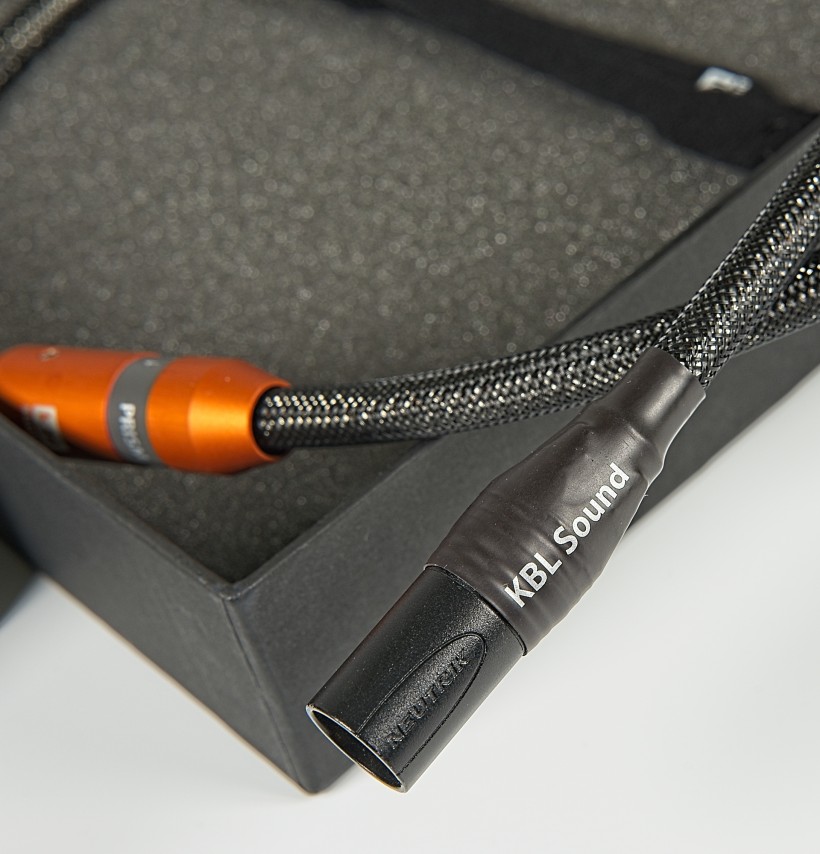
KBL SOUND PRISM D-451R Coaxial SPDIF
Moving on to the coaxial KBL Sound PRISM D-451R connecting the same pair of Playback Design components doesn’t introduce really any significant differences, only subtle ones. Mr. Robert Szczerbowski told me that from the feedback from his customers, it seems that usually one or the other cable sounds clearly better in their systems and that in most cases it is the coaxial version. That’s not quite my experience in this particular case. The sound with coaxial Prism is a touch more open, there is an extra layer of air surrounding instruments and vocalists, and at the same time, the midrange seems a little bit denser. On the other hand, it seems to me that bass has even more authority with AES/EBU interconnect which shifts the tonal balance slightly lower. All the differences I point out are quite subtle though, and I can hear them only after repeatedly switching from one connection to the other using the same five tracks.
After longer listening sessions without switching between the two Prisms every minute or so I start to recognize that I tend to prefer coaxial PRISM D-451R when it comes to acoustic music, and recordings with prominent vocals. On the other hand, when I start to listen to some electric blues, such as Dżem’s „Detox”, for example, or rock (Dire Strait’s „Love Over Gold”) the AES/EBU is my choice more often than not. I am talking about almost unconscious choices as one connection is just two clicks (on a remote) away from the other. So it is easy to check one option and the other and stop switching them at some point for each album.
It still doesn’t mean there are any huge differences between both Prisms as listening to Dżem’s album using the coaxial PRISM D-451R delivered excellent results as well. Rysiu Riedel’s voice is shown from a distance, yet it teems with contagious emotions. He was so good at involving the audience during live performances, that studio albums may seem a bit „cold” in comparison (at least for those of us, who remember his live performances). Yet, KBL Sound Prism, both of them to be honest, is so natural, that Rysiek even on this studio album sounds very lively, present, and engaged. While the bass and kick drum may be a little bit more powerful with the AES/EBU version, I like electric guitars a bit more with the coaxial. They seem just a touch richer as if their sound was deeper and saturated with even more energy in the midrange.
One of the albums I play next is Aerosmith’s „Permanent Vacation”. That’s another non-audiophile recording but I listen to it to find out whether KBL Sound Prism fulfills my definition of a „good” audio component. The latter does not play great when it comes to the super-duper audiophile releases while doing its best to prove how badly the lesser-quality ones perform. That’s a definition of a studio product designed to show all the flaws of a recording in making, not one for someone who wants to enjoy music even if it is not perfectly recorded. I always look for components and systems that can play any genre and any (I mean of at least decent quality) recording enjoyably while still differentiating the quality of the input signal properly. And that’s what both Prisms do. They clearly show me that the sound quality on this album is decent in audiophile terms, and really good compared to many other rock recordings.
All in all, Prism delivers a fun, ‘rocking’ performance with fantastic Steven Tyler vocals, brilliant guitar playing by Joe Perry, and so on. There is a good drive, there is a beautiful flow of music, there is a bit of ‘dirt’ and a lot of power and energy in the sound. It is a highly enjoyable presentation that I prefer with coaxial PRISM D-451R when I focus on vocals, and with AES/EBU PRISM D-451X when I care more about the powerful performance one expects from a rock legend. In each case, I just sit there fully engaged, singing along, and sometimes even playing imaginary guitar. I also find myself pushing the volume up way higher than I usually do not only because of how much I enjoy the presentation, but also because it doesn’t cause any negative sonic effect.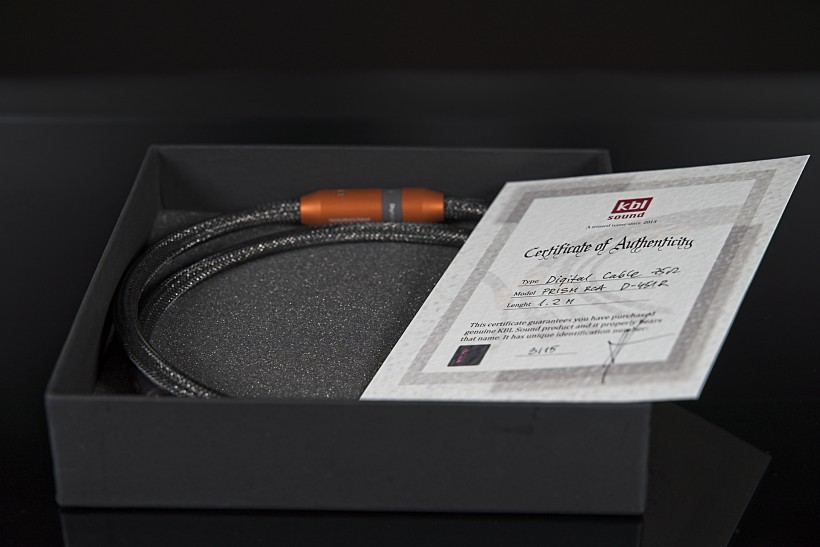
Looking for the differences between the two Prisms and studying further their features I play one of my favorite soundtracks, the one from „The Abyss” with music by Alan Silvestri. Similarly to the one from the original „Predator”, „The Abyss” is a great test for dynamic capabilities of a system/component. Both KBL Sound digital cables do very well in this regard but the balanced one (AES/EBU PRISM D-451X) seems to take a slight lead in the hottest, most complex fragments. It conveys the very fast shifts from the quiet to the loudest moments in a more immediate, more convincing, clearer way. Also, when the lowest notes build the ambiance of the (deep ocean) scenes, they seem to have a touch more energy better portraying the vastness and immense power of the ocean.
Yet again, when it comes to the calmer, more relaxed fragments of the soundtrack I almost instinctively switch to the coaxial PRISM D-451R as it seems to offer a more calming effect. These parts, lead by string instruments, are delivered with flair and panache, but as soon as the mighty drums enter accompanied by equally powerful brass instruments AES/EBU PRISM D-451X does an even more convincing job. Still, when at some point I again give up frequent switching between Prisms in search for the „better” option, the presentation in both cases is impressive, dynamic, highly energetic, it has a great flow, it is properly dramatic and exciting. I am not sure I would be able to choose my preferred connection if I had to as both sound incredibly well in this particular setup. It is possible, that in other ones I or you could choose differently, but here and now I love them both.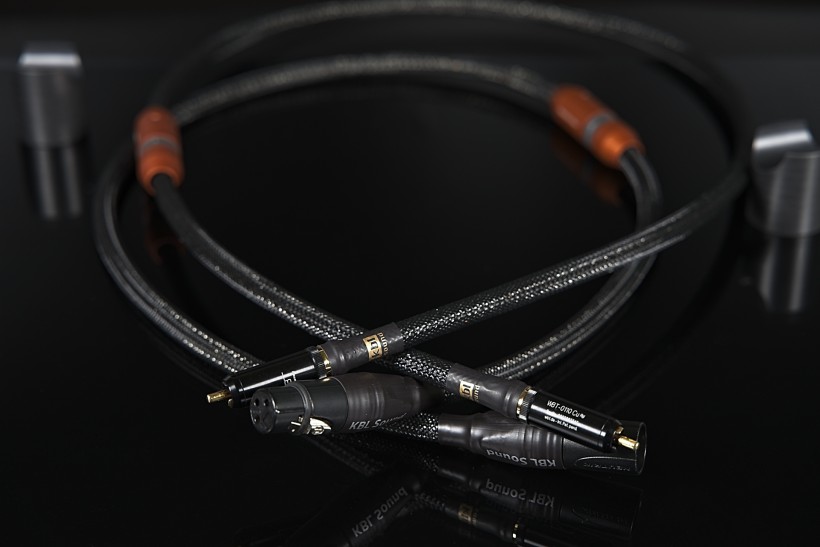
It so happens that a more „traditional” device lands in my listening room, the Ayon Audio CD-35 HF CD/SACD Player. It features high-quality CD transport and Coaxial SPDIF output so I decide to use it as another tool for this test. It gives me an option to compare three digital cables. From the bottom of my „cable drawer” (that I am sure many of you have as well after years of audiophile adventures) I take out another Polish product, once (meaning some 10-12 years ago) top Coaxial SPDIF cable by Audiomica. Together with Ayon CD-35 I also get Siltech Classic Legend 880D. The latter is the most expensive among them, although the Audiomica is an „old” model that back then if I remember correctly, was priced at 6-7 kPLN.
First I put in my old Audiomica. It does a really good job offering detailed, resolving, pretty neutral sound. It’s hard to point out any cons in its presentation, although even without direct comparison it seems to me, that KBL Sound PRISM D-451R is more natural, more energetic, and dynamic in its presentation. Once I switch the former for the latter my impression is confirmed. Remember that we are talking about the latest product of the KBL Sound and a (more than) 10-year-old product by Audiomica. It would be much more fair to compare a model from the current lineup but I didn’t have one at my disposal. The latter stands its ground, it is still a very capable contender, but the KBL Sound PRISM D-451R is simply even better.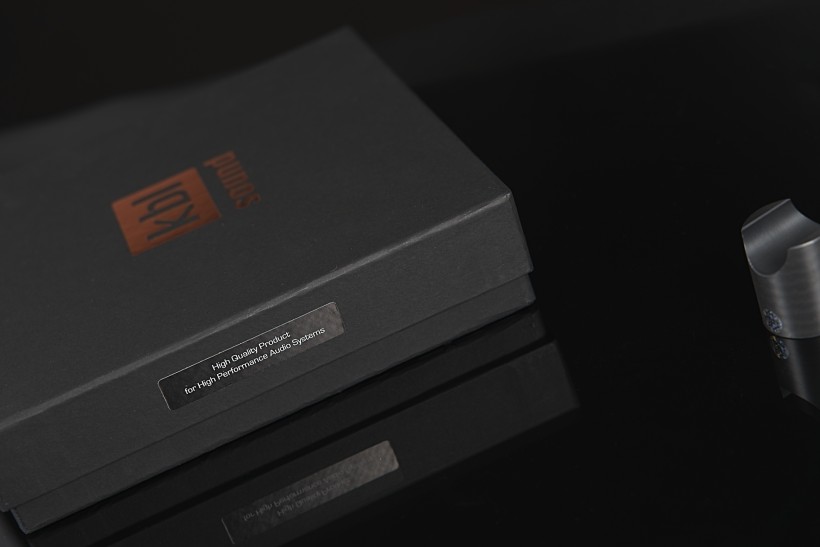
The tested PRISM D-451R simply sounds richer, and more natural, with a more open top and a touch tighter lower end. Its presentation outperforms the competitor in terms of spatial effects, particularly the depth of the stage and precision of imaging. Between the two, I have no doubts that the PRISM D-451R is a better choice delivering a more resolving, more open, spatial, more „analog” presentation. A combination of those qualities simply draws me deeper into the music and lets me enjoy it more. Don’t get me wrong – the old Audiomica is still a very good cable, just not as good as the new KBL Sound so if we focus purely on sound quality and forget about the financial aspect the latter is clearly the way to go.
KBL SOUND PRISM D-451R vs Siltech Classic Legend 880D
Now it’s time to roll out the big gun. After all, Siltech is one of the leading audio cable manufacturers in the world and their Classic Legend 880D digital interconnect is the top of the (Classic Legend) line. And it costs significantly more than PRISM D-451R. From experience, I know that beyond some point on the quality/price curve, the actual differences in sound quality become rather small, while perceived differences are still significant for potential buyers. It’s just that at some level any progress is welcome and expected to cost a lot. That’s why on the one hand I expect some differences between KBL Sound and Siltech, on the other I realize they can’t be huge, as both of them already represent high-end levels.
Siltech 880D has this feature that I enjoy and appreciate in all cables from the Classic Legend line, this incredibly silky smoothness. There is nothing artificial about it – Janis Joplin or Steven Tyler still „scream” at me, and Stańko’s trumpet pierces my ears when needed. Yet the whole presentation has, I am tempted to say, a touch of gold in it. Well, the cable has some gold in it, and it seems to me that it translates into this feature. You don’t have to like it like I do, but it’s there and it makes music more beautiful. To be clear, it is a highly resolving, well-balanced, refined, dynamic, and open-sounding cable. The silkiness is just one of the features, but one that makes it stand out.
Switching to KBL Sound PRISM D-451R the first thing I notice, also due to the the character of the track I play, is that the reverb with it seems longer and deeper. A side effect is an impression of an even deeper space behind the instruments. On the other hand, the midrange is not quite as rich and smooth as with the Siltech, but I don’t really expect it to be as the latter is very special in this regard. To be clear, while listening to several tracks with vocals, violins, and guitars I don’t find anything missing in the mid-frequencies. The sound with PRISM is very natural, rich, and palpable, just not as much as with Siltech, hence in direct comparison the former seems to offer a tonal balance set a bit higher. I believe the aforementioned opening of the space in almost every recording has to do with the impression too.
The longer I listen to these two, the more it seems to me that Siltech is a bit more focused on the midrange, while PRISM adds even more air to the treble, opening it a touch more. PRAT is very good with both, although Siltech adds a bit more mass to the lowest part of the range while KBL Sound keeps the bass a touch tighter. In both cases dynamics, energy of the presentation, and the coherence of it are on the same, very high level. Long story short, despite the price difference, both Coaxial SPDIF cables presented the same high-end level of performance just with some accents spread differently. If your system needs a bit more richness and mass in the midrange and bass area or is a touch too bright, Siltech can be the way to go. If, on the other hand, it needs a bit more opening up, more air in the upper part of the range, and larger space, KBL Sound PRISM D-451R would be my choice. No doubt both offer a more refined sound than the old Audiomica.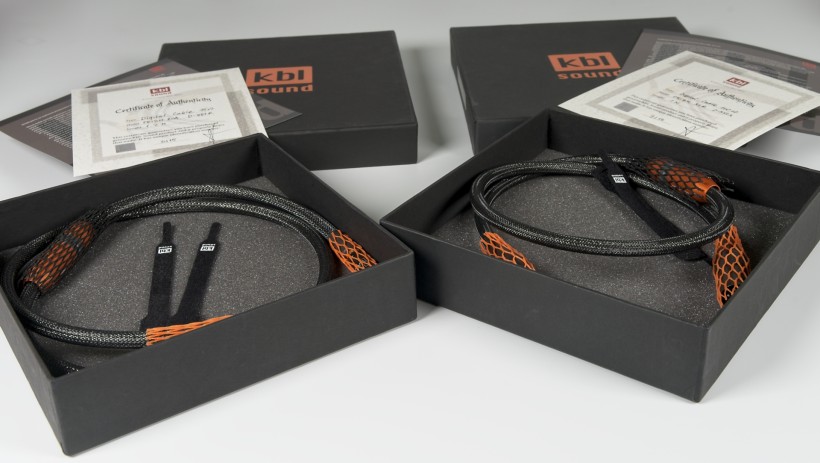
Summary
As mentioned before, digital interconnects are not quite my cup of tea as I don’t use them every day. In this case, though, I used them first to connect two Playback Design devices that had been delivering a truly high-end performance during a month-long evaluation before I started this review, and later Ayon Audio CD-35 with my LampizatOr Pacific 2. In both cases, KBL Sound Prism whether in AES/EBU KBL SOUND PRISM D-551X or Coaxial SPDIF KBL SOUND PRISM D-451R delivered an excellent, coherent, natural, non-fatiguing performance that allowed me to listen to the music for several hours a day.
The sound was highly resolving, precise, spatial, and teeming with details and subtleties, and yet I wouldn’t call it analytical or cold (which I don’t like). Instead, it was relaxed, effortless, smooth when needed, and super-dynamic and energetic when recordings demanded it. Compared to a more expensive competitor PRISM held its ground delivering slightly different in terms of character, yet equally refined, simply put high-end performance. From now on I will keep KBL Sound cables on my list of highly recommended cables, and it won’t be only analog and power ones anymore. The digital ones seem as good as any other product by this brand I had a chance to review so far.
Prices (when reviewed):
- KBL SOUND PRISM D-451R 75 Ohm 1,2 m: 1.760 EUR (355 EUR for each additional 0,5m)
- KBL SOUND PRISM D-551X 110 Ohm 1,2 m: 1.760 EUR (355 EUR for each additional 0,5m)
Manufacturer: KBL SOUND
Technical specifications (according to the manufacturer):
- Conductors: pure monocrystal copper, hand-polished
- Gauge 22 AWG
- Dielectrics: air, non-colored PTFE, kapton, polyurethane, polyolefin
- Wideband shielding: copper, tinned copper
- Braided sleeve: Antistatic carbon-infused polymer Sleeving for high-frequency shielding
- 75 Ω connectors: RCA WBT-0114 Cu nextgen™ WBT-PlasmaProtect™, True 75 Ω
- 75 Ω BNC connectors: Furutech FP 3-117(R)
- 110 Ω connectors: Neutrik NC3FXCC/NC3MXCC
- Standard length: 1,2 m
- Other lengths upon request (every 0,5 m more)
Associated equipment:
- Digital source: a custom passive server with WIN10, Roon, Fidelizer Pro 7.10, JCAT NET XE, and JCAT USB XE cards with FERRUM HYPSOS Signature power supply, KECES P8 (mono) linear power supply for the server, JCAT USB Isolator
- D/A Converter: LampizatOr Pacific 2 +Ideon Audio 3R Master Time (USB signal regenerator)
- Analog front end: J.Sikora Standard MAX turntable, J.Sikora KV12 tonearm, J.Sikora KV12 MAX tonearm, AirTight PC-3, phono stages: Grandinote Celio MK IV, ESE Lab Nibiru V 5.
- Power amplifiers: GrandiNote Shinai, Circle Labs M200, Art Audio Symphony II (modified)
- Preamplifier: Circle Labs P300
- Loudspeakers: GrandiNote MACH4, Ubiq Audio Model ONE Duelund Edition.
- Interconnects: Bastanis Imperial x2, Soyaton Benchmark, Hijiri Million, Hijiri HCI-20, KBL Sound Himalaya II XLR, David Laboga Expression Emerald USB, David Laboga Digital Sound Wave Sapphire Ethernet
- Speaker cables: Soyaton Benchmark
- Power cables: LessLoss DFPC Signature, Gigawatt LC-3
- Power: Gigawatt PF-2 MK2 and Gigawatt PC-3 SE Evo+; a custom power line with Gigawatt LC-Y in-wall cable; Gigawatt G-044 Schuko and Furutech FT-SWS-D (R)
- Network: Silent Angel Bonn N8 + Silent Angel Forester F1 + optical LAN isolator
- Racks: Base VI, Rogoz Audio 3RP3/BBS
- Anti-vibration accessories: ROGOZ-AUDIO SMO40 and CPPB16 platforms and ROGOZ AUDIO BW40MKII feet, Franc Accessories Ceramic Disc Slim Feet and Wood Block Platform, Graphite Audio CIS-35 and IC-35



